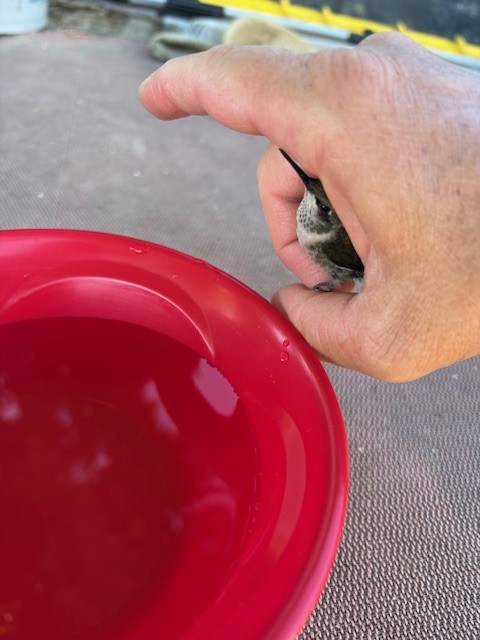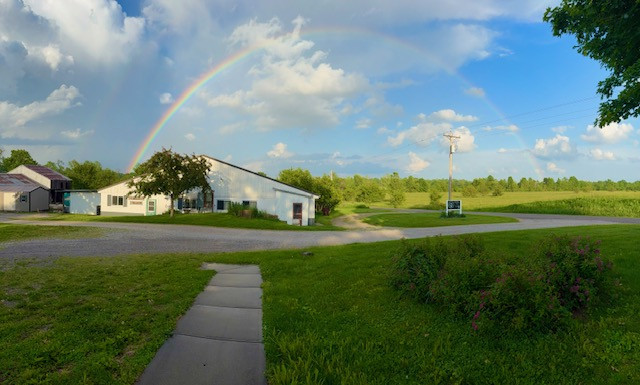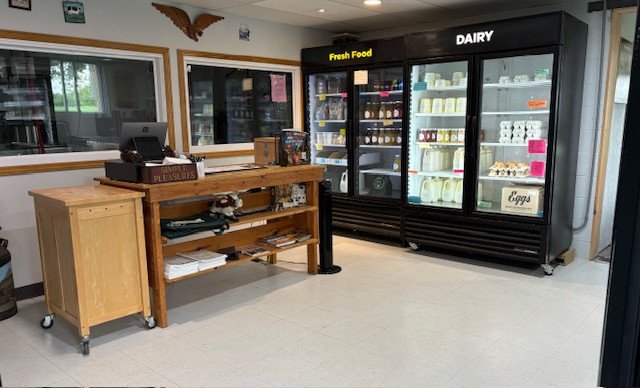Yegerlehner Farm History
posted on
August 28, 2020
I love history. There is something special in learning more about from where (and from whom) one has come. Imagining what life was like in the past has always held some fascination for me. When my grandma Yegerlehner passed away a couple years ago and we began sorting through an accumulation of multiple generations' belongings and mementos, opportunities to connect with the past were prevalent. And there are always more stories to unearth. One of our Yegerlehner cousins (2nd cousin, by my calculation), Deborah Sweeney, is a professional genealogist, so there have been parts of our family history that are known once more because of her years of research and sleuthing.
The cover photo collage features my dad, Alan, and his dad Kenneth, in the early days of the Yegerlehner dairy farm. It appears as though dad began exercising his leadership skills early from his position on the tractor!

David Jegerlehner and his wife Magdalena immigrated with their three children from Switzerland to America in 1851.
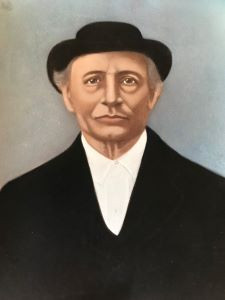
They initially settled in Holmes County, Ohio, but in the early 1860's moved to Owen County, IN, then to Clay County to live on the farm with their son Christian and his wife Elizabeth. 104 acres of our current farm have been in the family since the 1860's, but the story goes that what we call "the back 40" was deeded to Christian by the federal government for his service in the Civil War. Presumably this would not have occurred until after 1865, so if that's the case, this means they purchased the other 64 acres before he served in the war.
David operated a carpet weaving machine across the road from where the old farmhouse stood and now the current house stands. In the 1870 census Christian was listed as a farmer and a shoemaker. Doug said maybe that's why I like shoes! :D
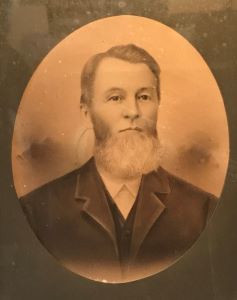
In Switzerland, the family name was spelled Jegerlehner (the letter J makes a "y" sound in the German language). On the ship manifest they were listed as Jacalander, probably because their Swiss German accent was difficult for the London workers to understand as they were registered as passengers. Once in America, it was changed to Yegerlehner, and some branches of the family changed the spelling further. Christian and Elizabeth's son John farmed here after Christian. His son Clarence purchased 80 acres adjacent to part of the original 104. With Kenneth's purchase of John's farmland, and Alan and Mary's purchase of Clarence's, the generations have been moving back and forth between the two tracts for a while now. Doug and I continued that pattern when we moved in to Kenneth and Mary Lois' house!

Dad thinks his grandfather Clarence told him the old bank barn that used to stand where our current milking barn is located may have been built in the 1880's. It burned in 1973 due to a hay fire, but I was intrigued by this newspaper cutout grandma had in some files. The story may not have been saved with the photo because we didn't come across it, but it's true, there were a number of bank barns in our area. Probably due to the ethnic background of those who settled here. The photograph below the newspaper has three barns captured...ours, another at the next farmstead, and barely visible in the distance is a third (it is no longer standing either). There is also one still up the road in the opposite direction!

The photo on the right was of Kenneth and little Alan in a feed wagon that would presumably be unloaded soon. The photo on the left was of the old house taken from atop a silo that was beside the old barn. Dad said his grandfather thought the house was built in the 1890's. Christian and Elizabeth's 10th and last child was born in 1881, which means a very large family may have lived for several years in a different home before this one was possibly built. Whether they all lived in the log building across the road or somewhere else has not been discovered. Kenneth and Mary Lois lived in the old farmhouse in the 1950's during the early years of their marriage. I remember Grandma saying it was terribly drafty. They planned to do some work on it but discovered termites had done such extensive damage that they ended up tearing it down and building a new house in its place in 1963.
This picture of the farmstead from the north is during the construction phase before the exterior siding was added.

The following printed articles and photos show a little window into the evolution of our farm over the past few decades.

I remember helping grandma feed calves in their hutches when I was a child. We would fill the bottles, cart them from the barn to the calves, feed them, then wash the bottles. We've raised calves in different ways over the years. Although it means sacrificing a little more milk, we let the cows nurse the calves for several months now.

Kenneth and Mary Lois Yegerlehner in the milkhouse

An aerial view of the house and barn, probably in the late 70's or early 80's. Note the tall silos, used for storing and fermenting silage which was fed to the cows as part of a total mixed ration. The dairy was more of a confinement operation in those years. Feed was mostly brought to the cows and the manure had to be hauled out. Production per cow was higher, but so were expenses!

A third silo and a feed room were added to the barnlot in the 1980's.

Grandpa and dad were and have always been conscientious farmers, seeking to leave their land better than it was when they began stewarding it. Even when it meant experimenting with non-conventional methods or diverging from common practices of the day. Grandpa received a Master Farm Conservationist recognition in 1992.

In less than 2 decades, the "blue tubes" were taken down. The costs of maintaining so much equipment began to take its toll. It was in these years that Alan read some revolutionizing articles in the New Farm Magazine. One was about seasonal dairying (imagine NOT having to milk cows 7 days a week for 365 days a year, every year of your working life!), and the other portrayed the benefits of rotational grazing. The last 30 years have been a result of the catalytic effect of those two articles.

Grandpa passed away in 1995. The following year we had the opportunity to travel to Switzerland and visit relatives we had never met before. While there, dad and mom's vision for local artisan food began to take shape. It would be another 5 years before the renovations commenced which converted half the barn from cow handling and calving facilities to a processing room for the milk our cows produced. The past 20 years have continued to be full of changes...changes in grazing management, product lines, marketing avenues, and more. And I imagine more changes will be part of the future in some way, shape, or form. The story continues. We don't always know what's around the bend or how the next chapter might unfold, but what remains unchanging is our love of the land and the ecosystems around us, our passion to provide healthy food for the people we have the opportunity to serve, and our commitment by faith to live in a manner worthy of our calling. If you have connected with us at any point, YOU are a part of our story, too, and we are grateful our paths have crossed!



